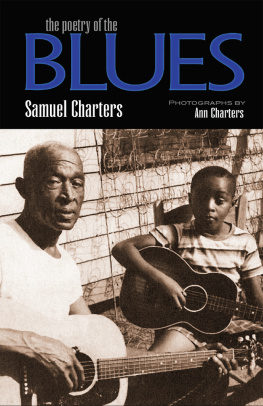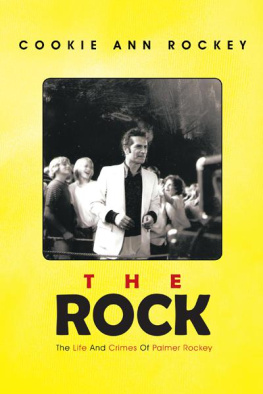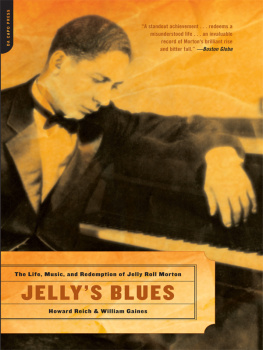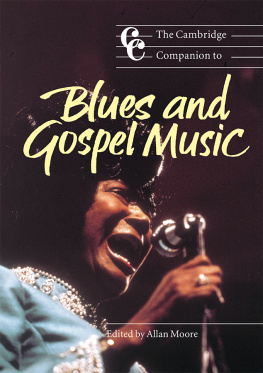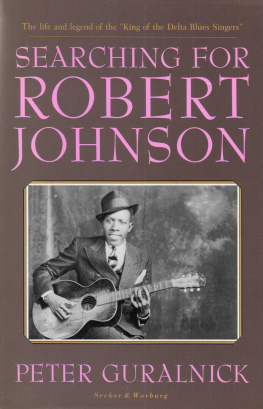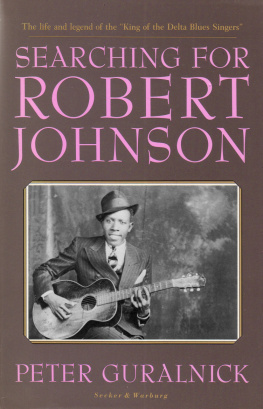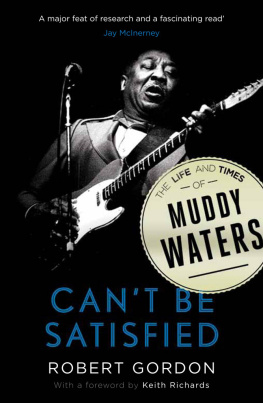
Also by Robert Palmer
Baby, That Was Rock and Roll:
The Legendary Leiber and Stoller (1978)
A Tale of Two Cities: Memphis Rock and New Orleans Roll (1979)
Jerry Lee Lewis Rocks! (1981)
Deep Blues: A Musical and Cultural History
of the Mississippi Delta (1981)
The Rolling Stones (1983)
Rock & Roll: An Unruly History (1995)
BLUES & CHAOS
The Music Writing of ROBERT PALMER
Robert Palmer
Edited by Anthony DeCurtis
Scribner
New York London Toronto Sydney

Scribner
A Division of Simon & Schuster, Inc.
1230 Avenue of the Americas
New York, NY 10020
www.SimonandSchuster.com
Copyright 2009 by Augusta Palmer
Introduction copyright 2009 by Anthony DeCurtis
All rights reserved, including the right to reproduce this book or portions thereof in any form whatsoever. For information address Scribner Subsidiary Rights Department, 1230 Avenue of the Americas, New York, NY 10020.
First Scribner hardcover edition November 2009
SCRIBNER and design are registered trademarks of The Gale Group, Inc., used under license by Simon & Schuster, Inc., the publisher of this work.
For information about special discounts for bulk purchases, please contact Simon & Schuster Special Sales at 1-866-506-1949 or business@simonandschuster.com.
The Simon & Schuster Speakers Bureau can bring authors to your live event. For more information or to book an event contact the Simon & Schuster Speakers Bureau at 1-866-248-3049 or visit our website at www.simonspeakers.com .
Designed by Carla Jayne Jones
Manufactured in the United States of America
10 9 8 7 6 5 4 3 2 1
Library of Congress Control Number: 2009014346
ISBN 978-1-4165-9974-6
ISBN 978-1-4391-0963-2 (ebook)
constitutes an extension of the copyright page.
Flirtations with Chaos:
The Life and Work of Robert Palmer
Dont worry, I know everything: Thats the way music critic Ira Robbins once described the tone of Bob Palmers writing to me. We both laughed when he said that, because his statement perfectly got at Palmers ability to mix erudition with ease, to reassure his readers with his confidence and command. But, despite the arrogance that remark might imply, Bob was never showy about his knowledge. In a style that blended elegance and hipster enthusiasm, he would travel deeper and deeper into his subject, bringing his readers along with him in the interest of turning them on to something he loved.
Bob is best known as the author of Deep Blues: A Musical and Cultural History of the Mississippi Delta, which was published in 1981 and is still in print. It remains essential reading for anyone interested in the indelible music that, drawing on its African roots, originated in the Delta, moved to Chicago, and made an inestimable contribution to the creation of rock & roll. In his conclusion to that book, Bob writes of the blues, A literary and musical form a fusion of music and poetry accomplished at a very high emotional temperature these are different ways of describing the same thing. A gigantic field of feeling thats a way of describing something enduring, something that could be limitless. How much thought can be hidden in a few short lines of poetry? How much history can be transmitted by pressure on a guitar string? The thought of generations, the history of every human being whos ever felt the blues come down like showers of rain.
The notion that pressure on a guitar string, the singular tone of a musicians playing, could convey all that is important in human history lies at the center of Bobs thinking, writing, and playingat the center of his being, really. He was not a religious person in any traditional sense; he was probably closer to a pagan. But music was one of the means through which he sought transcendence. For Bob, music was a religion, says Robbie Robertson, the former guitarist and main songwriter in the Band, who knew Palmer for many years. It would stream out of him in the same way that somebody would be trying to impress you with their knowledge of God.
Anyone who read Bobs work, and certainly anyone who knew him, was aware of the stunning range and depth of his musical passion. It wasnt until I began working on this anthology, however, that I truly began to understand the extent of his achievement. Everyone I mentioned Bob to, of course, knew about his writing on the bluesbut nearly everyone also had a recommendation from well beyond that world. As with so many great writers and thinkers, each person I spoke to seemed to have his or her own version of Bob Palmer and stories about the impact his work made on them.
Jazz devotees discussed his writing with the greatest respect. Fans of classic rock raved about his pieces on the Rolling Stones and Led Zeppelin. Veterans of New Yorks punk scene expressed deep gratitude for his vital support of that music in The New York Times and elsewhere. Avant-gardists talked about his pieces on Philip Glass, LaMonte Young, and Steve Reich. His writing about the Master Musicians of Jajouka excited interest in Moroccan music, and world music in general, nearly four decades ago, long before it became fashionable.
But more extraordinary than even how many different types of music Bob could write about compellingly was how multifaceted his knowledge was. No aspect of his understanding seemed to cancel out any other; in fact, in the rarest of gifts, each element of his comprehension enhanced the others. He was a musician himself, of course, but his writing about music was never insiderish or unnecessarily technical. The sheer physical sound of music was his great subject, but when he discussed lyrics, he did so with the sensitivity of a literary critic. He loved and believed in musics mythic qualities, but that faith never compromised his grasp of the social and compositional components of musical creation.
Bob viewed music as a vehicle of transcendence but wrote and spoke colorfully about the nitty-gritty, down-to-earth contexts and larger-than-life personalities that gave it birth. Its almost as if, if you read Bob, you didnt need to read anyone elsehis vision of music was so complete. Reviewing Deep Blues in The Nation, David A. Lusterman concluded that at heart, its a book for anyone who ever wonders where music, any music, really comes from. That understanding of musics origins in the human spirit suffuses every word that Bob wrote.
This collection, then, attempts to convey the character and breadth of Bobs achievement, a daunting task. It would be a foolish one as well, were it not for the ability of Bobs writing to communicate in whatever context it appears. This could have been a rock collection or a punk collection or a blues collection, and, hopefully, such anthologies and others will follow. But to fully comprehend Bobs magnificent gifts, I believe, you need to see them all on display. The array of musical subjects in this book is part of its very point.
As the scale of this book would suggest, Bob was extremely prolific. In addition to Deep Blues, he wrote a number of other books: Baby, That Was Rock and Roll: The Legendary Leiber and Stoller (1978); A Tale of Two Cities: Memphis Rock and New Orleans Roll (1979); Jerry Lee Lewis Rocks! (1981); The Rolling Stones (1983); and Rock & Roll: An Unruly History (1995). From 1981 until 1988, he was the chief pop music critic at The New York Times,
Next page

